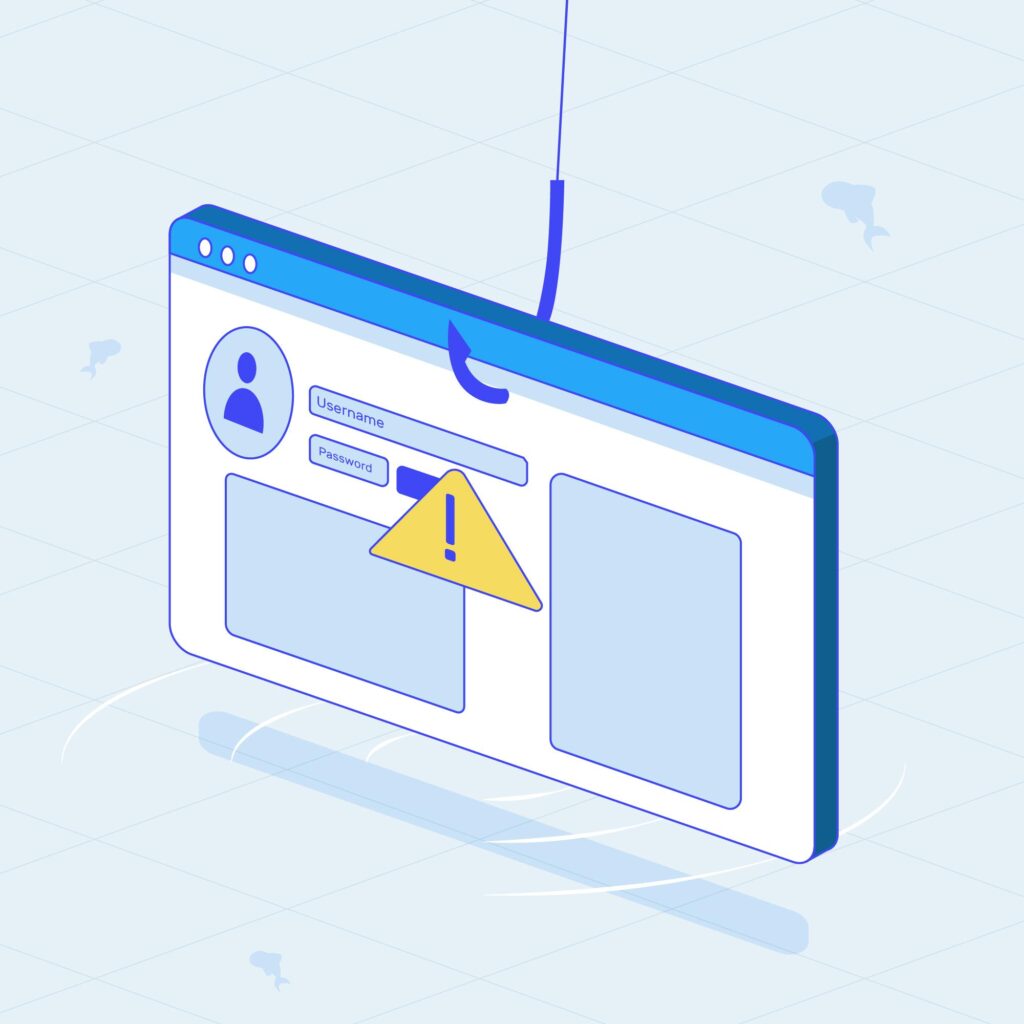What is Phishing? Explained and Tips to Stay Safe Online
Every day more than 3 billion phishingmails are sent. Consequently, there is a good chance that you will receive one of them today. This is why it is extremely important to understand what phishing is and how to handle it. We have therefore included some tips to recognize phishing. Discover the ins and outs of phishing and equip yourself with this knowledge to navigate the digital landscape securely.
What is Phishing?
Phishing is a form of online scam that aims to trick individuals into revealing their personal information. Scammers often target sensitive data like bank details or passwords. The most common form of phishing is email phishing, where scammers send deceptive emails to extract information. However, new types of phishing, such as SMS phishing (Smishing), are on the rise. Smishing attacks are very similar to email phishing attacks only now the misleading messages are sent via SMS rather than email.
To answer the question: “What is phishing?” we will first dive into the top 5 signs of phishing, since this is the most important to understand. For who is keen to learn more about phishing, you can scroll further to learn more about how phishing scams work and how to prevent phishing.
What to do when you are not sure if a message is phishing or not
With every suspicion of phishing, please verify the authenticity of the message through a trusted communication channel, such as a known phone number or official email address!
What is Phishing: Top 5 Signs of Phishing
Phishing attempts often involve impersonating organizations or individuals. It’s crucial to be cautious if you receive emails, messages, or calls claiming to be from reputable sources, particularly if they request personal information or financial details. With emails, you can easily verify the sender’s address by expanding it to see if it matches the genuine address associated with the organization or person.
2. Unfamiliar writing style (with impersonation)
Pay attention to the writing style used in the communication. Hackers may not replicate the tone or language typically used by the organization or person they are impersonating. If the message seems off or inconsistent with what you would expect, it could be a red flag. Ask the person through a known channel to check if the message is really from them in this case.
3. Sense of urgency
Phishing scams often create a sense of urgency or fear to prompt immediate action. They may claim your account is at risk, your password needs to be updated or an unauthorized transaction has occurred. Beware of such urgent requests and take the time to verify the legitimacy before responding or providing any information.
4. Request for sensitive information
Phishing attacks frequently involve requests for sensitive information like passwords, bank details, social security numbers or credit card information. Legitimate organizations usually do not ask for such information via email or messages. Be cautious if you are being asked to provide sensitive data.
5. Grammar errors and misspelled words
Phishing emails often contain grammar mistakes, misspelled words or awkward sentence structures. While legitimate organizations strive for professionalism and accuracy, phishers may overlook these details. If you notice consistent grammar errors or suspicious language in the communication, it could indicate a phishing attempt.
What is Phishing: How does Phishing Work?
Phishing operates through various tactics, where cybercriminals pose as trusted entities to exploit unsuspecting individuals. Typically, they craft fraudulent emails, messages, calls or websites that appear authentic, thereby aiming to trick recipients into divulging sensitive information like passwords, credit card details, or personal data. Often, in emails, there is a link that leads to a fake website that is designed to resemble a familiar party (such as your bank). Nowadays, these websites are becoming increasingly sophisticated, making them harder to distinguish from genuine ones. However, one way to verify any website is by checking its domain. Website domains are unique, and if it does not match the official domain, you can be certain it is a scam website.
What is Phishing: How to Prevent Phishing?
To prevent phishing, staying vigilant and proactive is crucial. One of the most effective steps is conducting phishing tests, especially within companies. We highly recommend performing at least one phishing test annually, but ideally two. These tests help keep colleagues sharp and aware of the tactics used by cybercriminals. After each test, valuable lessons can be learned, allowing employees to reinforce their knowledge and responses to potential phishing attacks.
We offer phishing tests for companies, if you want to learn more about this you can visit the following page: https://phishing-test.org/phishing-simulation/



